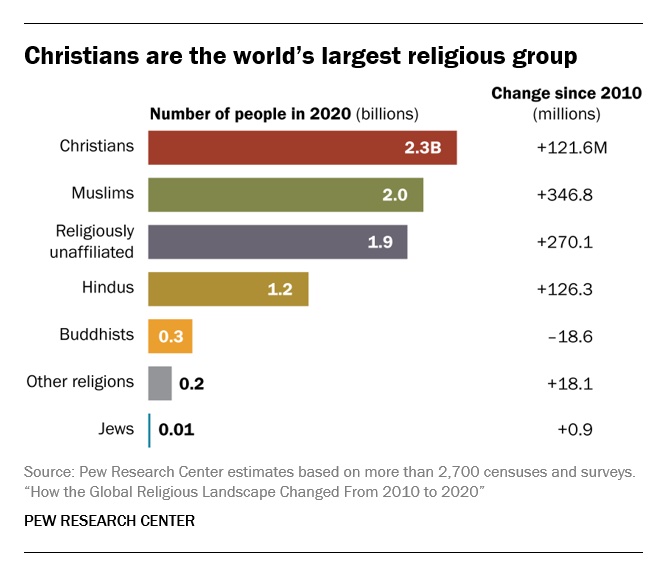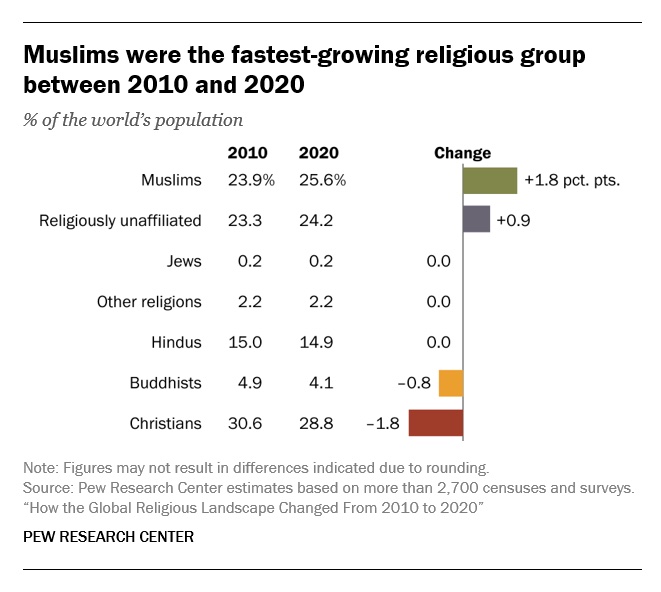Uncategorized
Jewish institutions awaken to climate crisis, with hundreds pledging action
(JTA) — For a decade starting in 2002, Jennifer Laszlo Mizrahi devoted herself to pro-Israel advocacy. After that, the Jewish philanthropist and activist from Annapolis, Maryland, went all in to fight for disability rights, working in the field for the next decade. Now, Mizrahi is focused on climate change.
“Let me put it this way: In 2021, we donated to one climate organization, and in 2022, we donated to 17 of them,” Mizrahi said, referring to the small charity fund she runs with her husband, tech entrepreneur Victor Mizrahi. This year, the couple made their largest climate-related donation yet, sending a group of nine climate reporters to Israel to meet tech startups working on ways to reduce greenhouse gas emissions. Mizrahi and her husband have also begun commercially investing in such startups.
“I was hoping other people would solve it,” she said. “But the pace of the change is not nearly meeting the demand at the moment. I felt that even though I don’t know the subject, I’m just going to have to do it because I have kids and I don’t want this world to fall apart.”
Climate change has long ranked at or near the top of a list of issues concerning Jews in the United States, according to multiple surveys, and Jews have been heavily involved in the wider climate movement. But until recently, the issue had a marginal place on the agendas of Jewish communal organizations, which neglected climate even as the subject took on importance in the activism and policies of other religious communities and in the larger philanthropic world.
Mizrahi’s newfound emphasis on climate is an early example of a larger shift that is underway in Jewish philanthropy, a multibillion-dollar world made up of thousands of individual donors, charitable foundations and nonprofit organizations.
“It’s the beginning of what will become a more widespread focus among Jewish groups,” said Rabbi Jennie Rosenn, the founder and CEO of the Jewish climate group Dayenu. “We’re seeing an awakening to this as a profoundly Jewish issue, and awakening to the role that the Jewish community has to play in addressing the climate crisis.”
Scientists say that decisions regarding carbon emissions made in the next few years will affect life on Earth for thousands of years to come. The most recent warning came in March, when leading global experts with the Intergovernmental Panel on Climate Change published a new report, stating that “there is a rapidly closing window of opportunity to secure a liveable and sustainable future for all.”
The large Jewish populations living in the coastal United States are vulnerable to extreme storms, sea-level rise, severe heat and other weather disruptions — a situation dramatized in the recent Apple television series “Extrapolations,” in which a rabbi contends with rising sea waters infiltrating his Florida synagogue. Meanwhile, Israel is experiencing a slew of impacts from drought and floods to security threats tied regional climate-related instability.
A flooded road after heavy rainfall in the central Israeli city of Lod, Jan. 16, 2022. (Yossi Aloni/Flash90)
Israeli officials visit the site where a road collapsed into a large sinkhole at Mineral Beach in the Dead Sea on December 7, 2017. Many facilities and beaches have been closed or shut down in recent years following the increase in sinkholes caused by ever-declining sea levels, as climate change strains the country’s water resources. (Mark Neyman/GPO)
The last few months have seen a flurry of new initiatives aimed at both greening Jewish institutions and directing collective action on climate.
In December, for example, Rosenn’s group published a report calculating that endowments of Jewish organizations, from family foundations to local federations, are invested in the fossil fuel industry to the tune of at least $3 billion. The report launched an ongoing campaign called All Our Might that urges Jewish leaders to withdraw these investments and put the money toward clean energy instead.
Meanwhile, many of the most prominent Jewish organizations in the country — representing local federations, Hillel chapters, summer camps, community centers, day schools and nearly every religious denomination — had already joined a new green coalition organized by another Jewish environmental group and were preparing to unveil pledges to do more in the fight against climate change.
The unveiling of the climate pledges happened in March, under the leadership of Adamah, a nonprofit created through the merger of two stalwarts of Jewish environmentalism, Hazon and the Pearlstone Center.
“Climate and sustainability have not been on the list of priorities for the vast majority of Jewish organizations; this coalition and these climate action plans reflect a deep paradigm shift and culture change moving forward,” Adamah CEO Jakir Mandela said at the time.
The commitments made by members of Adamah’s Jewish Climate Leadership Coalition include sending youth leaders to global climate summits, reducing emissions of buildings and vehicles and lobbying the federal government to pass climate policies.
More than 300 congregations and nonprofits have joined. For Earth Day, Adamah announced a million-dollar fund offering interest-free loans and matching grants to Jewish groups for projects to reduce their greenhouse gas emissions.
If any single event can be said to mark the debut of the climate issue as a top Jewish communal priority, it is probably the recent annual conference of the Jewish Funders Network, which took place in March in Phoenix, bringing together thousands of donors and charity executives.
For the gathering’s first event, before the formal opening of the conference, a group of participants went on a field trip to downtown Phoenix to learn about the local effects of the climate crisis. Far more people signed up than organizers anticipated, and with about 55 passengers, the tour bus chartered for the occasion reached capacity. Mizrahi, who was among the participants, said the trip was helpful as a networking opportunity for like-minded philanthropists.
“We wanted to expose them to how the existential threats posed by climate change are not long term, but are already here,” Yanklowitz said. “People down in the Zone are dying every summer from heat exhaustion and dehydration.”
Based on his debrief with the group afterward, Yanklowitz feels the trip left an impact on participants.
“I didn’t hear anyone say, ‘Oh, I’m changing my commitments.’ But I did get the sense that climate change was kind of abstract for many people, and that now it really hit home,” Yanklowitz said.
The rest of the conference featured multiple talks and gatherings dedicated to climate, including on the main stage, and an announcement that Birthright, which offers free trips to Israel for young Jews, was increasing its own climate activism with the help of a new donation.
In an interview, Ellen Bronfman Hauptman and Stephen Bronfman, children of Birthright founder Charles Bronfman, said their $9 million gift is meant to honor their father on the occasion of his 90th birthday, while also bringing Birthright more in line with the values of a new generation that is environmentally-minded.
Birthright organizers will use the funding to develop programming focused on climate that could, for example, expose participants to Israel’s clean tech scene. The money is also intended to help Birthright lower its own carbon footprint, potentially by switching to electric buses or adding more vegetarian meals.
The Bronfmans hope that Birthright’s significant purchasing power in Israeli tourism will nudge the industry toward more ecologically sustainable practices.
“To me, Birthright is like Walmart — everyone wants to do business with them,” Stephen Bronfman said. “They have the power to dictate terms to their service providers and affect the supply chain.”
The widespread interest in climate mobilization among Jewish groups comes after years in which the issue languished outside the mainstream. Rosenn, the head of Dayenu, who has attended about 15 conferences of the Jewish Funder Network, noticed a change this year.
“There used to be half a dozen people at a breakfast before the program talking about climate. And it wasn’t even climate, necessarily — it was the environment writ large,” she said.
The Jewish world is, in many ways, still lagging behind the larger climate movement. Divesting endowment funds from the fossil fuel industry, for example, is seen as a bold step among Jewish groups even though at least 1,590 institutions representing nearly $41 trillion in assets have already publicly committed to doing so, according to a website tracking such pledges. About a third of the groups on the list are defined as faith-based organizations, but only three are Jewish: Kolot Chayeinu, a congregation in Park Slope, Brooklyn; the Reform movement’s pension system; and the American Jewish World Service, a global justice group.
Rabbi Laura Bellows, now Dayenu’s director of spiritual activism and education, waves matzah as she encourages major financial organizations to divest from fossil fuels at a rally in Washington, D.C., April 20, 2022. (Bora Chung | Survival Media Agency / Courtesy of Dayenu)
Adamah’s own climate plan doesn’t include a pledge to divest but only a promise that it will investigate the option of doing so for its endowment and employee retirement funds. Instead, the plan touts the group’s education and advocacy efforts, and focuses on reducing emissions at its retreat centers.
Adamah’s chief climate officer, Risa Alyson Cooper, acknowledged that Jewish community institutions have been “largely absent” from the divestment movement and said her group regards divestment as one of several required tools for addressing the climate crisis.
She said the Jewish community hit a milestone when 12 of the 20 founding members of Adamah’s climate coalition said in their climate plans that they would consider amending their financial practices. That was significant, she said, in light of the organizations’ complex and deliberate governing structures, which can make executing such changes onerous.
“While the Jewish community may have lagged behind in years past, we are catching up quickly,” Cooper said.
Such a shift would mark not only a milestone for Jewish climate activism but also a departure from how the Jewish community has historically done philanthropy, said Rabbi Rachel Kahn-Troster, executive vice president of the Interfaith Center on Corporate Responsibility.
She said wielding financial holdings for social impact has been a hallmark of advocacy by Christian groups. Last year, the Presbyterian Church (U.S.A.) opted to divest from fossil fuels in light of the climate crisis.
The Jewish community, meanwhile, has tended to act primarily through charitable donations. One of the reasons for the difference, she said, is that the Jewish community is much less centralized with communal assets spread across many endowments, making the actions of any single group relatively less impactful.
“Adamah had done some really important work to change individual behavior and grow people’s connections to the environment, but the bigger piece of bold collective action to fight the climate crisis was missing,” Kahn-Troster said. “The overall community is late to respond to the urgency of the problem. But I do think that the work of these organizations is very significant, so I’m excited to see it.”
Kahn-Troster’s historical view is informed by the legacy of her father, Rabbi Lawrence Troster, an environmental activist who had pushed for communal Jewish action on climate, and by the passion for climate justice displayed by her 15-year-old, Liora Pelavin, a member of the Jewish Youth Climate Movement, an arm of Adamah.
“Finding a meaningful Jewish space to do grassroots-level climate advocacy that many young people are demanding has been really important to Liora,” Kahn-Troster said.
—
The post Jewish institutions awaken to climate crisis, with hundreds pledging action appeared first on Jewish Telegraphic Agency.
Uncategorized
How the Global Religious Landscape Changed from 2010 to 2020

Muslims grew fastest; Christians lagged behind global population increase
• Christians are the world’s largest religious group, at 28.8% of the global population. They are a majority everywhere except the Asia-Pacific and Middle East-North Africa regions. Sub-Saharan Africa has surpassed Europe in having the largest number of Christians. But Christians are shrinking as a share of the global population, as millions of Christians “switch” out of religion to become religiously unaffiliated.

• Muslims are the world’s second-largest religious group (25.6% of the world’s population) and the fastest-growing major religion, largely due to Muslims’ relatively young age structure and high fertility rate. They make up the vast majority of the population in the Middle East-North Africa region. In all other regions, Muslims are a religious minority, including in the Asia-Pacific region (which is home to the greatest number of Muslims).

• The religiously unaffiliated population is the world’s third-largest religious category (24.2% of the global population), after Christians and Muslims. Between 2010 and 2020, religiously unaffiliated people grew more than any group except Muslims, despite their demographic disadvantages of an older age structure and relatively low fertility. The unaffiliated made up a majority of the population in 10 countries and territories in 2020, up from seven a decade earlier.
• Hindus are the fourth-largest religious category (14.9% of the world’s population), after Christians, Muslims and religiously unaffiliated people. Most (99%) live in the Asia-Pacific region; 95% of all Hindus live in India alone. Between 2010 and 2020, Hindus remained a stable share of the world’s population because their fertility resembles the global average, and surveys indicate that switching out of or into Hinduism is rare.
• Buddhists (4.1% of the world’s population) are the only group in this report whose number declined worldwide between 2010 and 2020. This was due both to religious disaffiliation among Buddhists in East Asia and to a relatively low birth rate among Buddhists, who tend to live in countries with older populations. Most of the world’s Buddhists (98%) reside in the Asia-Pacific region, the birthplace of Buddhism.
• Jews, the smallest religious group analyzed separately in this report (0.2% of the world’s population), lagged behind global population growth between 2010 and 2020 – despite having fertility rates on par with the global average – due to their older age structure. Most Jews live either in North America (primarily in the United States) or in the Middle East-North Africa region (almost exclusively in Israel).
These are among the key findings of a Pew Research Center analysis of more than 2,700 censuses and surveys, including census data releases that were delayed due to the coronavirus pandemic. This report is part of the Pew-Templeton Global Religious Futures project, which analyzes global religious change and its impact on societies around the world. Funding for the Global Religious Futures project comes from The Pew Charitable Trusts and the John Templeton Foundation.
Uncategorized
Antisemitism in some unlikely places in America

By HENRY SREBRNIK Antisemitism flourishes in a place where few might expect to confront it – medical schools and among doctors. It affects Jews, I think, more emotionally than Judeophobia in other fields.
Medicine has long been a Jewish profession with a history going back centuries. We all know the jokes about “my son – now also my daughter – the doctor.” Physicians take the Hippocratic Oath to heal the sick, regardless of their ethnicity or religion. When we are ill doctors often become the people who save us from debilitating illness and even death. So this is all the more shocking.
Yes, in earlier periods there were medical schools with quotas and hospitals who refused or limited the number of Jews they allowed to be affiliated with them. It’s why we built Jewish hospitals and practices. And of course, we all shudder at the history of Nazi doctors and euthanasia in Germany and in the concentration camps of Europe. But all this – so we thought – was a thing of a dark past. Yet now it has made a comeback, along with many other horrors we assume might never reappear.
Since the Hamas attack on Israel on October 7, 2023, there has been a resurgence of antisemitism, also noticeable in the world of healthcare. This is not just a Canadian issue. Two articles on the Jewish website Tablet, published Nov. 21, 2023, and May 18, 2025, spoke to this problem in American medicine as well, referencing a study by Ian Kingsbury and Jay P. Greene of Do No Harm, a health care advocacy group, based on data amassed by the organization Stop Antisemitism. They identified a wave of open Jew-hatred by medical professionals, medical schools, and professional associations, often driven by foreign-trained doctors importing the Jew-hatred of their native countries, suggesting “that a field entrusted with healing is becoming a licensed purveyor of hatred.”
Activists from Doctors Against Genocide, American Palestinian Women’s Association, and CODEPINK held a demonstration calling for an immediate cease-fire in Gaza at the Hart Senate Office Building in Washington, D.C., Nov. 16, 2023, almost as soon as the war began. A doctor in Tampa took to social media to post a Palestinian flag with the caption “about time!!!” The medical director of a cancer centre in Dearborn, Michigan, posted on social media: “What a beautiful morning. What a beautiful day.” Even in New York, a physician commented on Instagram that “Zionist settlers” got “a taste of their own medicine.” A Boston-based dentist was filmed ripping down posters of Israeli victims and a professor at the University of Pennsylvania Perelman School of Medicine did the same. Almost three-quarters of American medical associations felt the need to speak out on the war in Ukraine but almost three-quarters had nothing to say about the war in Israel.
Antisemitism in academic medical centres is fostering noxious environments which deprive Jewish healthcare professionals of their civil right to work in spaces free from discrimination and hate, according to a study by the Data & Analytics Department of StandWithUs, an international, non-partisan education organization that supports Israel and fights antisemitism.
“Academia today is increasingly cultivating an environment which is hostile to Jews, as well as members of other religious and ethnic groups,” StandWithUs director of data and analytics, and study co-author, Alexandra Fishman, said on May 5 in a press release. “Academic institutions should be upholding the integrity of scholarship, prioritizing civil discourse, rather than allowing bias or personal agendas to guide academic culture.”
The study, “Antisemitism in American Healthcare: The Role of Workplace Environment,” included survey data showing that 62.8 per cent of Jewish healthcare professionals employed by campus-based medical centres reported experiencing antisemitism, a far higher rate than those working in private practice and community hospitals. Fueling the rise in hate, it added, were repeated failures of DEI (diversity, equity, and inclusion) initiatives to educate workers about antisemitism, increasing, the report said, the likelihood of antisemitic activity.
“When administrators and colleagues understand what antisemitism looks like, it clearly correlates with less antisemitism in the workplace,” co-author and Yeshiva University professor Dr. Charles Auerbach reported. “Recognition is a powerful tool — institutions that foster awareness create safer, more inclusive environments for everyone.”
Last December, the Data & Analytics Department also published a study which found that nearly 40 per cent of Jewish American health-care professionals have encountered antisemitism in the workplace, either as witnesses or victims. The study included a survey of 645 Jewish health workers, a substantial number of whom said they were subject to “social and professional isolation.” The problem left more than one quarter of the survey cohort, 26.4 per cent, “feeling unsafe or threatened.”
The official journal of the Alliance for Academic Internal Medicine concurs. According to “The Moral Imperative of Countering Antisemitism in US Medicine – A Way Forward,” by Hedy S. Wald and Steven Roth, published in the October 2024 issue of the American Journal of Medicine, increased antisemitism in the United States has created a hostile learning and practice environment in medical settings. This includes instances of antisemitic behaviour and the use of antisemitic symbols at medical school commencements.
Examples of its impact upon medicine include medical students’ social media postings claiming that Jews wield disproportionate power, antisemitic slogans at the University of California, Los Angeles (UCLA) David Geffen School of Medicine, antisemitic graffiti at the University of California, San Francisco (UCSF) Cancer Centre, Jewish medical students’ exposure to demonization of Israel diatribes and rationalizing terrorism; and faculty, including a professor of medicine at UCSF, posting antisemitic tropes and derogatory comments about Jewish health care professionals. Jewish medical students’ fears of retribution, should they speak out, have been reported. “Our recent unpublished survey of Jewish physicians and trainees demonstrated a twofold increase from 40% to 88% for those who experienced antisemitism prior to vs after October 7,” they stated.
In some schools, Jewish faculty are speaking out. In February, the Jewish Faculty Resilience Group at UCLA accused the institution in an open letter of “ignoring” antisemitism at the School of Medicine, charging that its indifference to the matter “continues to encourage more antisemitism.” It added that discrimination at the medical school has caused demonstrable harm to Jewish students and faculty. Student clubs, it said, are denied recognition for arbitrary reasons; Jewish faculty whose ethnic backgrounds were previously unknown are purged from the payrolls upon being identified as Jews; and anyone who refuses to participate in anti-Zionist events is “intimidated” and pressured.
Given these findings, many American physicians are worried not only as Jewish doctors and professionals, but for Jewish patients who are more than ever concerned with whom they’re meeting. Can we really conceive of a future where you’re not sure if “the doctor will hate you now?”
Henry Srebrnik is a professor of political science at the University of Prince Edward Island.
Uncategorized
The 2025 Toronto Walk (and talk ) for Israel

By GERRY POSNER There are walks and then there are walks. The Toronto UJA Walk for Israel on May 25, 2025 was one of a kind, at least as far as Canada and Jews are concerned. The number of people present was estimated to be 56,000 people or 112,000 total shoes. (How they get to that number is bewildering to me, since there is no one counting). This was 6,000 more than last year. Whether it is true or not, take it from me, it was packed. The synagogues in Canada should be so fortunate to get those numbers in total on High Holidays. The picture here gives you a sense of the size of the crowd.

This was my first walk in Toronto for Israel and I was with my granddaughter, Samantha Pyzer (not to forget her two friends whom she managed to meet at the site, no small feat, even with iPhones as aids). The official proceedings began at 9:00 a.m. and the walk at 10:00 a.m. There was entertainment to begin with, also along the way, and at the finish as well. The finish line this year was the Prosserman Centre or the JCC as it often called. The walk itself was perhaps 4 kilometres – not very long, but the walking was slow, especially at the beginning. There were lots of strollers, even baby carriages, though I did not see any wheelchairs. All ages participated on this walk. I figured, based on what I could see on the faces of people all around me that, although I was not the oldest one on the walk, I bet I made the top 100 – more likely the top 20.
What was a highlight for me was the number of Winnipeggers I met, both past and present. Connecting with them seemed to be much like a fluke. No doubt, I missed la lot of them, but I saw, in no particular order (I could not recall the order if my life depended on it): Alta Sigesmund, (who was, a long time ago, my daughter Amira’s teacher), Marni Samphir, Karla Berbrayer and her husband Dr. Allan Kraut and family. Then, when Samantha and I made it to the end and sat down to eat, I struck up a conversation with a woman unknown to me and as we chatted, she confirmed her former Winnipeg status as a sister-in- law to David Devere, as in Betty Shwemer, the sister of Cecile Devere. I also chanced upon Terri Cherniack, only because I paused for a moment and she spotted me. As we closed in near the finish, I met ( hey were on their way back), Earl and Suzanne Golden and son Matthew, as well as Daniel Glazerman. That stop caused me to lose my granddaughter and her pals. Try finding them amid the noise and size of the crowd – but I pulled it off.

As I was in line to get food, I started chatting with a guy in the vicinity of my age. I dropped the Winnipeg link and the floodgates opened with “ Did I know Jack and Joanie Rusen?” So that was an interesting few minutes. And I was not too terribly surprised to come across some of my Pickleball family. All of these meetings, along with spotting some of my sister’s family and other cousins, were carried on with the sound of the shofar as we moved along the way. In short, this was a happening. Merchants selling a variety of products, many of them Israeli based, were in evidence and, of course, the day could not have ended without the laying of tefillin, aided by Chabad, who have perfected the procedure to take less than a minute. See the photo. Chabad had a willing audience.
Aside from the joy of sharing this experience with my granddaughter, the very presence of all these Jews gathered together for a common reason made this day very special to me. However, there was a downside to the day. The downside was that, as we began to walk back to our car there was no other way I could figure out how to return when the rains came and came. While we walked faster, we were impeded by pouring rain and puddles. But Samantha wanted to persevere, as did I. We made it, but were drenched. My runners are still drying out as I write this two days later.
What with being surrounded by 56,000 people, the noise, the slow walking, and the rain, I can still say the day was a real highlight for me – one of the better moments since our arrival in Toronto in 2012. As well as the photos we took along the way, I have the reminder of the day, courtesy of the UJA, as evidenced from the photo. It was not just the walk, but the talk that accompanied the walk that made it so worthwhile for me. I would do it again, minus the rain.
